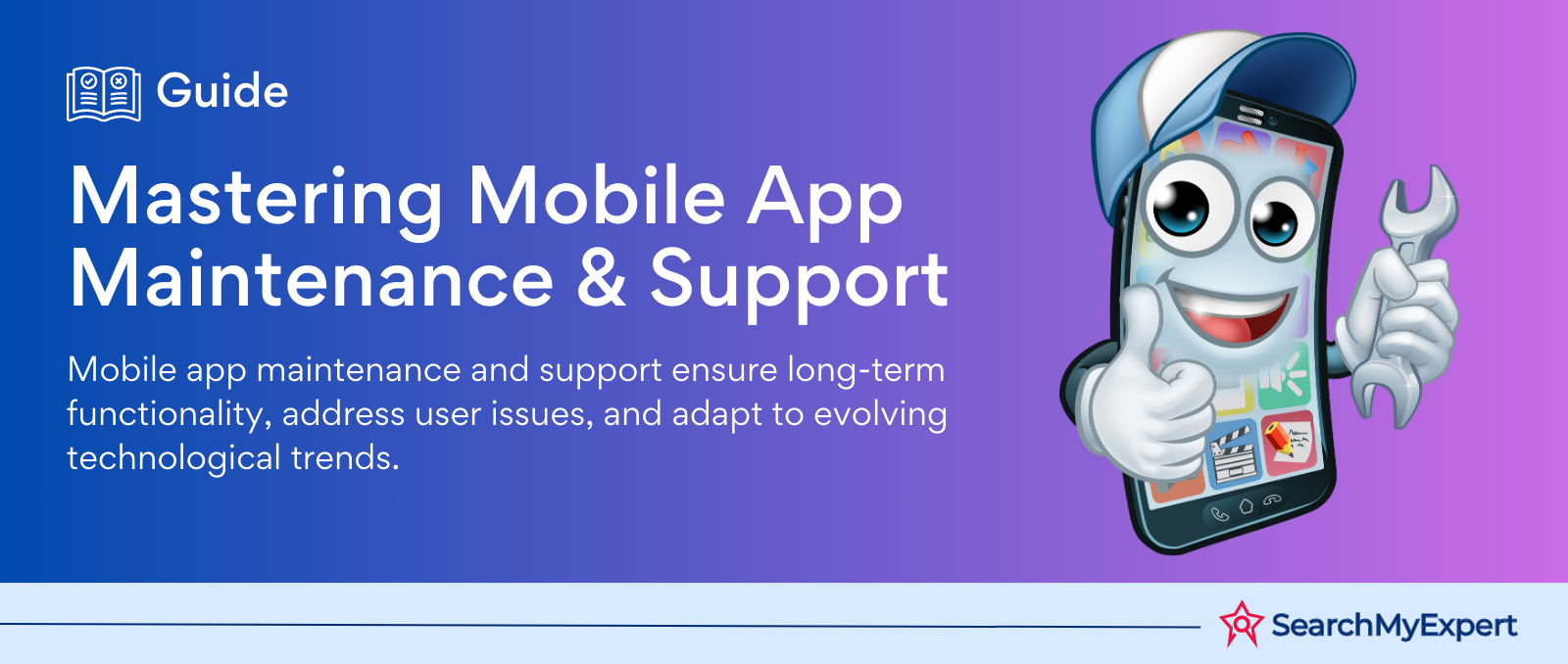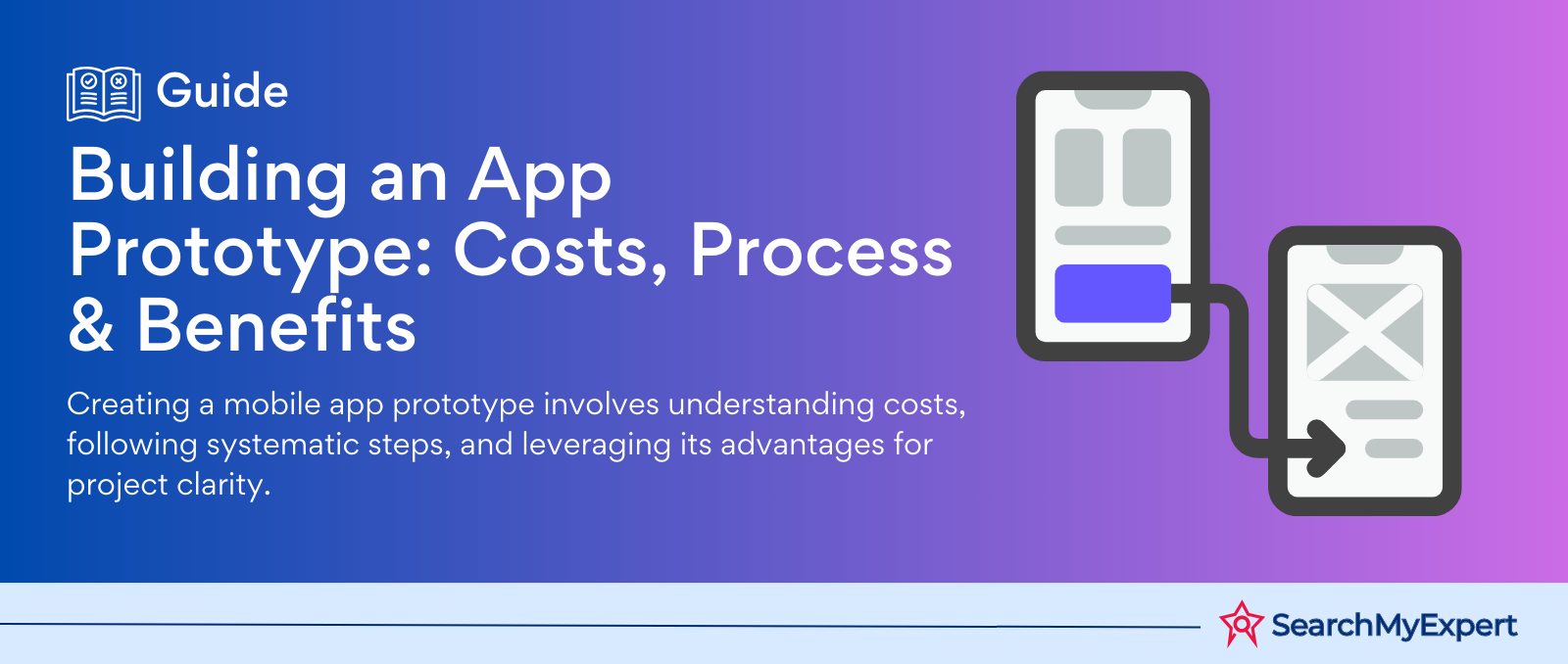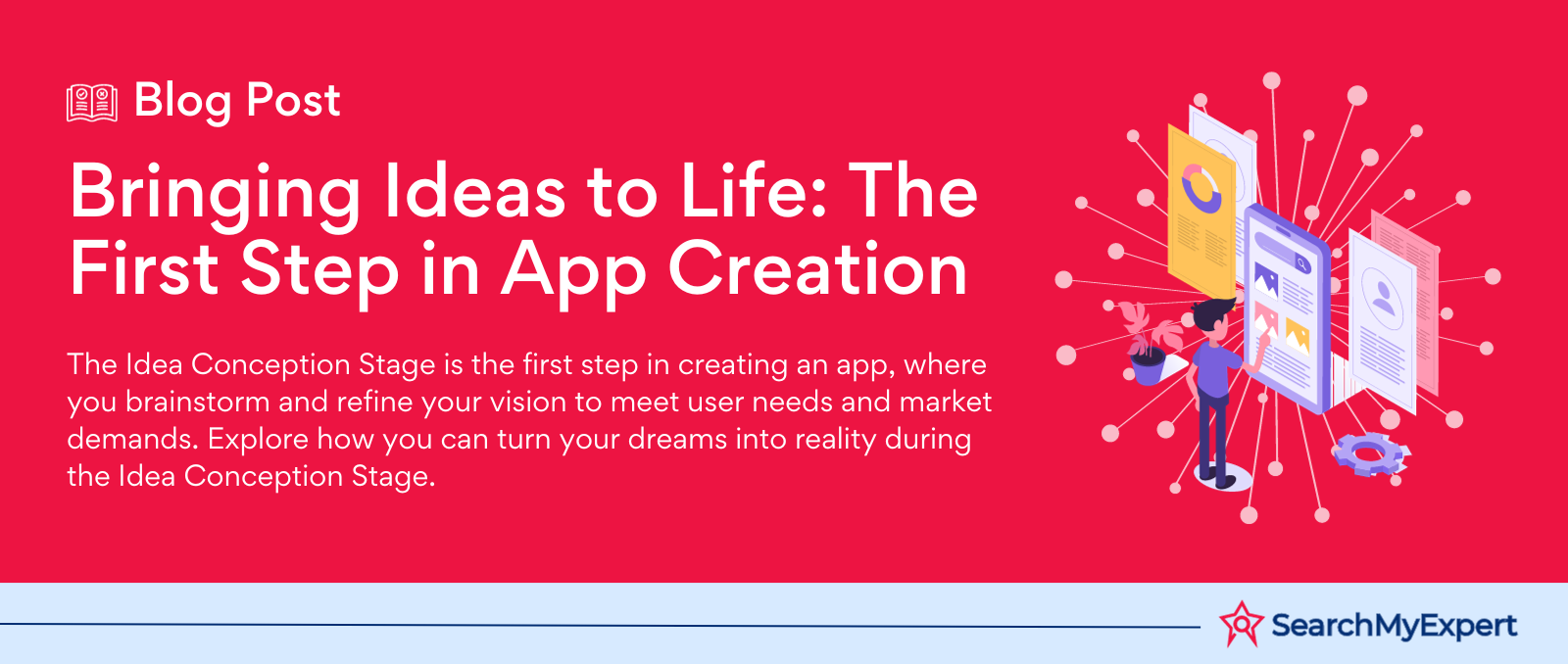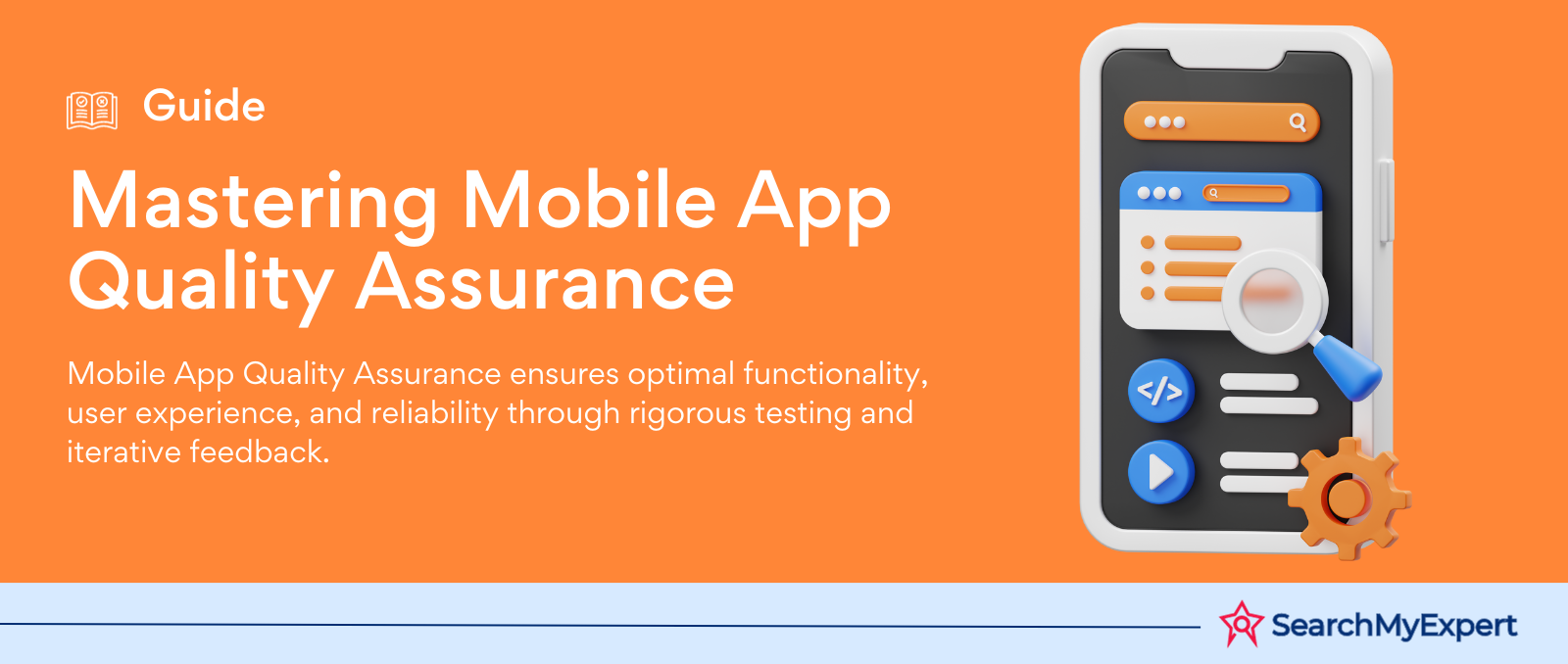Hey there, awesome visitor! 👋 Our website is currently undergoing some nifty upgrades to serve you even better. But don't worry, we'll be back before you can say "SearchMyExpert rocks!"
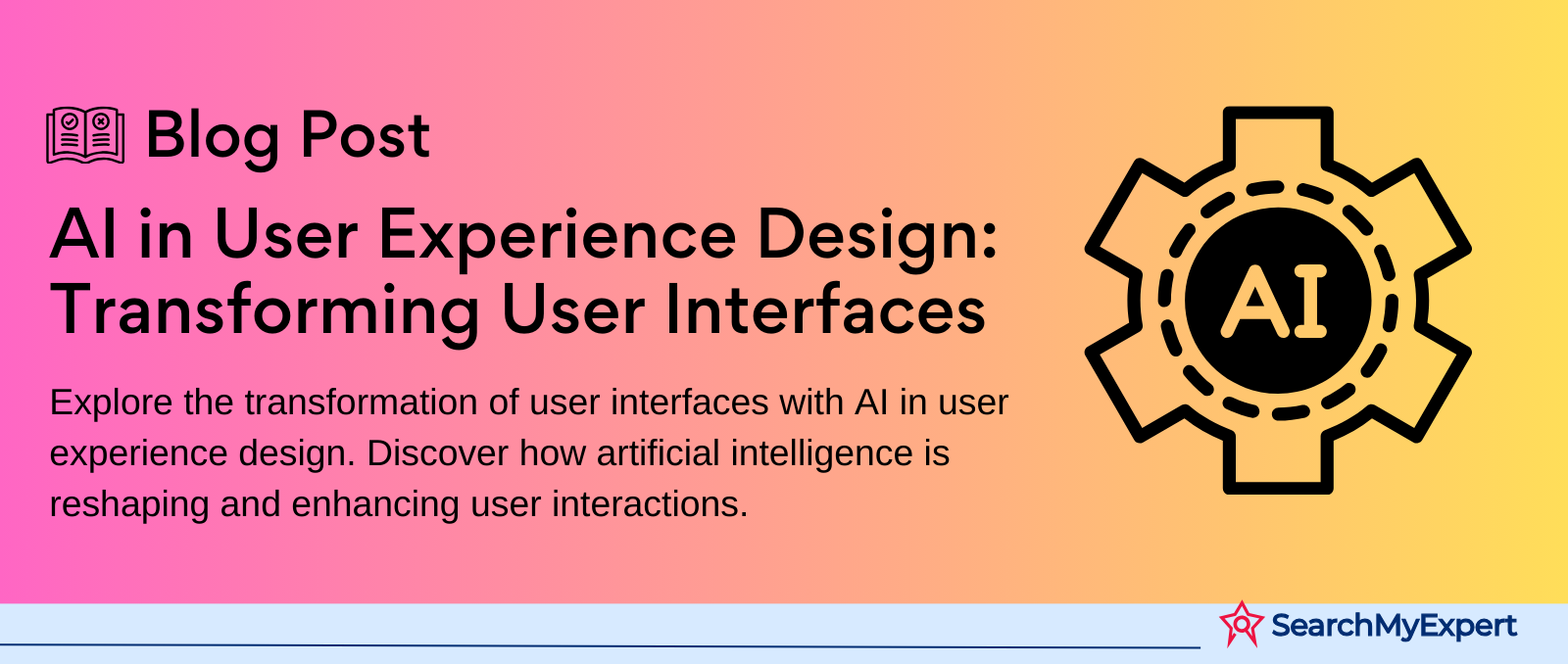
Harnessing AI in UX Design: A Comprehensive Exploration
The Evolution of User Experience in the Age of Artificial Intelligence
User Experience (UX) design is a pivotal aspect of modern software development, focusing on creating products that provide meaningful and relevant experiences to users. At its core, UX design revolves around enhancing user satisfaction by improving usability, accessibility, and the pleasure provided in the interaction with the product.
Enter Artificial Intelligence (AI), a game-changer in numerous industries. AI, at its simplest, involves using computer systems to perform tasks that normally require human intelligence. This includes learning from data, problem-solving, and decision-making. Its relevance spans healthcare, finance, manufacturing, and more, radically transforming operational efficiencies and capabilities.
Now, imagine the fusion of AI and UX design. This growing intersection is not just a trend; it's a revolution in the way we approach user experience. AI's ability to analyze vast amounts of data, recognize patterns, and predict user behavior opens new horizons in creating more intuitive, personalized, and efficient user interfaces. This synergy calls for a deep dive into how AI is reshaping UX design, making it a ripe area for exploration and innovation.
Understanding AI-powered UX Tools
AI: The New Frontier in Enhancing User Experience
User Research and Data Analysis
AI is revolutionizing user research and data analysis in UX design. AI-powered tools can mine and analyze vast amounts of user behavior data, providing invaluable insights into user needs and preferences. These insights enable designers to create more personalized and relevant user experiences. Predictive analytics, a subset of AI, goes a step further by forecasting future user behavior based on current data, allowing for anticipatory design decisions.
Prototyping and Testing
In the realm of prototyping and testing, AI is a powerful ally. AI tools assist in creating interactive prototypes that closely mimic final products, enabling a more accurate assessment of user interaction. Furthermore, AI streamlines the usability testing process by automating tasks such as user interaction recording and analysis, making the feedback loop faster and more efficient.
Design Refinement and Optimization
When it comes to refining and optimizing designs, AI algorithms are invaluable. They can analyze user interaction data and A/B testing results to suggest areas for improvement. This ensures that design decisions are data-driven and aligned with actual user preferences and behaviors, leading to a more effective and user-centric product design.
Benefits of AI for UX Design
Transforming User Experience with AI: A Leap Towards Innovation
Data-Driven Decision Making
AI ushers in a new era of data-driven decision-making in UX design. Gone are the days of relying solely on intuition or subjective opinions. AI provides concrete, quantitative insights that guide designers in making informed choices. By analyzing user interaction data, AI helps identify patterns and preferences, ensuring that design decisions are backed by solid data. This shift towards objectivity enhances the overall effectiveness and relevance of the design.
Enhanced User Understanding
Understanding the user is the cornerstone of effective UX design. AI takes this understanding to a new level. By leveraging machine learning and data analytics, AI can personalize experiences to suit individual user preferences and behaviors. This means that each user interaction is tailored, creating a more engaging and satisfying experience. Personalization, powered by AI, ensures that users feel seen and understood, fostering a deeper connection with the product.
Improved Efficiency and Productivity
AI is a game-changer in terms of efficiency and productivity in the UX design process. By automating repetitive and time-consuming tasks, AI frees up designers to focus on more creative and strategic aspects of design. Tasks like data analysis, pattern recognition, and even some elements of prototyping can be streamlined with AI, reducing the time and effort required and speeding up the design process.
Continuous Optimization and Evolution
The power of AI lies in its ability to learn and adapt continuously. AI algorithms constantly analyze user data, learning from interactions and feedback. This ongoing learning process ensures that the UX is always evolving, staying relevant and effective. AI-driven continuous optimization means that the user experience is not static but dynamically adapts to changing user needs and preferences, ensuring long-term engagement and satisfaction.
Challenges and Ethical Considerations in AI-Enhanced UX Design
Navigating the Complexities of AI in UX Design
Bias and Transparency
One of the most significant challenges in integrating AI with UX design is the potential for bias in AI algorithms. Bias in AI can stem from skewed datasets or flawed algorithmic design, leading to prejudiced outcomes. This issue underscores the crucial need for transparency in the application of AI in UX design. Designers and developers must ensure that AI algorithms are fair and unbiased, and users should be informed about how their data is being used to shape their experience.
Human-AI Collaboration
The synergy between human designers and AI is vital. While AI brings efficiency and data-driven insights, human guidance and oversight remain essential. Human designers play a critical role in interpreting AI-generated data, making empathetic and ethical decisions, and ensuring that the AI's suggestions align with the overall design vision and user needs. This collaboration is key to leveraging AI's strengths while maintaining the human touch that is central to great UX design.
Impact on User Privacy
User privacy is a paramount concern in the age of AI-enhanced UX design. The extensive data collection required for AI to personalize and enhance user experiences raises serious ethical considerations. It is imperative for designers and developers to be transparent about data collection practices, ensure user data is handled responsibly, and comply with privacy laws and regulations. Balancing the benefits of AI with the need to respect user privacy is a delicate but essential aspect of ethical AI use in UX design.
Real-world Examples of AI in UX Design
AI Transforming User Experiences: Case Studies and Tools
The integration of AI in UX design is not just theoretical; it's being actively implemented across various industries, enhancing user experiences in remarkable ways. Let's delve into some concrete examples of how AI is revolutionizing UX design.
E-commerce Personalization
In the realm of e-commerce, AI-powered personalization tools are reshaping the shopping experience. For instance, AI algorithms analyze user browsing patterns, purchase history, and preferences to tailor product recommendations. This personalization not only improves user experience but also boosts sales and customer loyalty.
Voice-Activated Interfaces
Voice-activated interfaces, powered by AI, are transforming the way users interact with devices. Products like smart home assistants utilize AI to understand and respond to voice commands, making technology more accessible and intuitive. This shift towards voice UI represents a significant leap in enhancing user experiences.
Predictive User Experience
Predictive UX, where AI anticipates user needs and actions, is gaining traction. For example, navigation apps use AI to predict traffic patterns and suggest the best routes, saving users time and hassle. This proactive approach to UX design makes everyday tasks more efficient and user-friendly.
AI-Powered Tools in Action
- Adobe Sensei: Leveraging AI and machine learning, Adobe Sensei helps designers by automating complex processes, enabling content personalization, and providing intelligent insights.
- Google's AutoML: This tool enables designers to create custom machine learning models for their specific needs, enhancing the user experience through tailored AI solutions.
These real-world examples and tools underscore the profound impact of AI in UX design, showcasing its potential to create more personalized, intuitive, and efficient user experiences.
The Future of AI in UX Design
Envisioning Tomorrow: The Next Wave of AI in User Experience
The future of AI in UX design is not just promising; it's poised to redefine the boundaries of user interaction and experience. As technology evolves, we are on the cusp of witnessing groundbreaking advancements in AI that will further revolutionize UX design.
Advanced AI Integration
Future AI developments in UX are expected to be more nuanced and sophisticated. We anticipate AI algorithms that can understand and interpret human emotions, providing an even more personalized experience. This could mean interfaces that adapt not just to user preferences, but also to their current mood and context.
Augmented Reality (AR) and AI
The fusion of Augmented Reality (AR) and AI holds tremendous potential for UX design. AR can overlay digital information onto the real world, and when combined with AI, this technology can create highly immersive and interactive user experiences. Imagine AR applications that can learn from user interactions and modify the AR environment in real-time to suit individual needs.
Voice Interfaces and Beyond
Voice interfaces are just the beginning. With advancements in AI, we can expect to see more natural, conversational interfaces that can understand nuances in speech and even non-verbal cues. The integration of AI in voice and other sensory interfaces will make interactions more intuitive and human-like.
The Uncharted Territory
As AI continues to advance, we may see the emergence of entirely new technologies and interfaces that are yet to be imagined. The possibilities are limitless, with AI continually pushing the envelope in UX design, promising more seamless, intuitive, and engaging user experiences.
AI in UX Design: Redefining User Experiences with Intelligence and Ethics
As we reflect on the transformative role of AI in UX design, several key takeaways emerge:
- Data-Driven and Personalized Experiences: AI enables the creation of more personalized and user-centric designs by leveraging data-driven insights. This enhances user engagement and satisfaction significantly.
- Efficiency and Creativity: AI's ability to automate repetitive tasks frees up designers to focus on more creative and complex challenges, pushing the boundaries of innovation in design.
- Continuous Learning and Evolution: AI algorithms continuously learn from user interactions, ensuring that UX designs are not static but dynamically adapt to evolving user needs and preferences.
- Ethical Considerations and Transparency: As AI becomes more integrated into UX design, ethical considerations, particularly around user privacy and data security, become increasingly important. Maintaining transparency and ensuring fairness in AI algorithms are critical.
- Human-Centered Approach: Despite the advancements in AI, the importance of a human-centered approach in design remains paramount. Human intuition, empathy, and ethical judgment are irreplaceable and must guide the integration of AI in UX design.
Conclusion
The integration of AI in UX design is a journey towards more intelligent, personalized, and efficient user experiences. However, this journey must be navigated with a commitment to ethical practices and a focus on human-centered design principles. As we embrace the potential of AI, we must also uphold the values that keep technology aligned with human needs and well-being.
Make a lasting impact with UX Design Companies.
Other Related Blogs
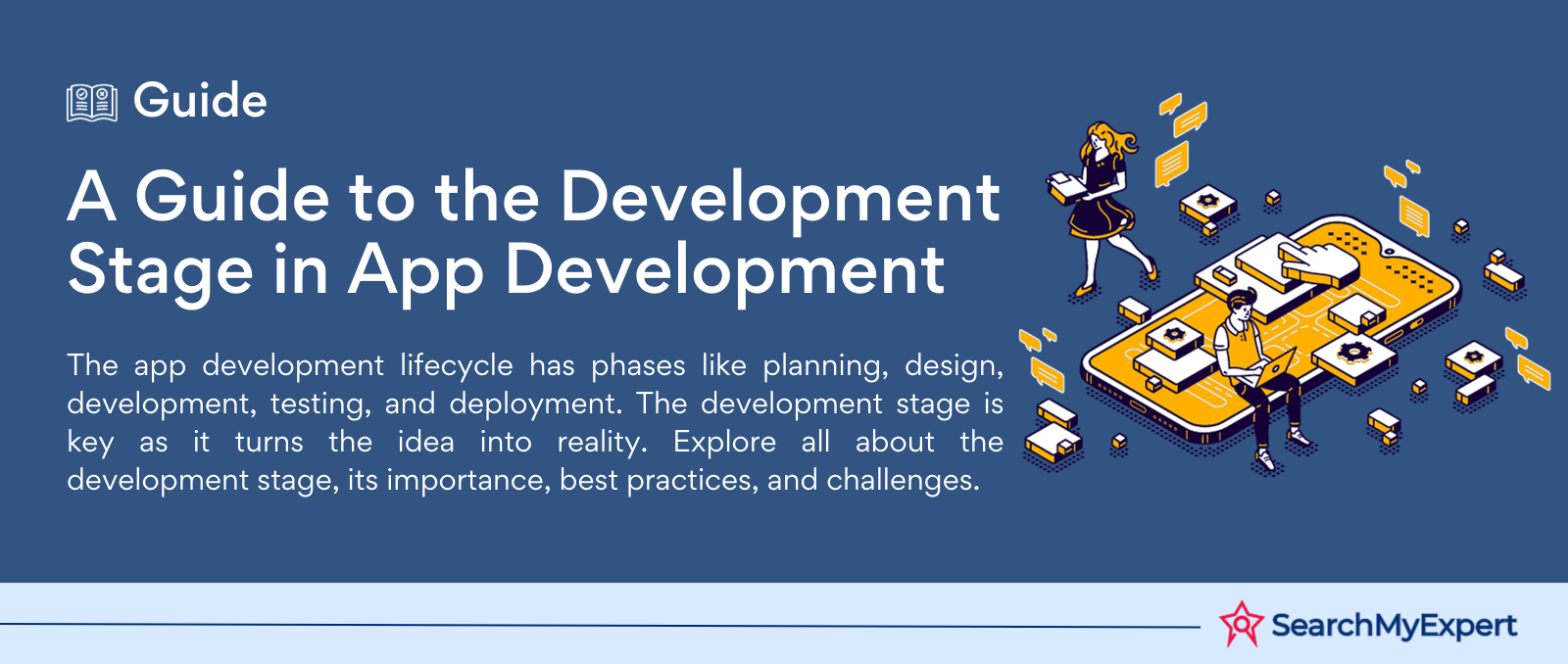

Mastering Docker for App Development: A Comprehensive Guide to Benefits, Use-Cases, and Alternatives

STAY UP TO DATE
GET PATH'S LATEST
Receive bi-weekly updates from the SME, and get a heads up on upcoming events.
Contact Us
We will get back to you as soon as possible.
Please try again later.


Find The Right Agencies
SearchMyExpert is a B2B Marketplace for finding agencies. We help you to describe your needs, meet verified agencies, and hire the best one.
Get In Touch
WZ-113, 1st Floor, Opp. Metro Pillar No- 483, Subhash Nagar - New Delhi 110018
About Us
For Agencies
Benefits Of Listing With Us
Submit An Agency
Agency Selection Criteria
Sponsorship
For Businesses
Agencies Categories
Trends Articles
FAQs
Find The Right Agencies
SearchMyExpert is a B2B Marketplace for finding agencies. We help you to describe your needs, meet verified agencies, and hire the best one.
About Us
For Agencies
List Your Agency
Benefits Of Listing
Agency Selection Criteria
Sponsorship
Get In Touch
WZ-113, 1st Floor, Opp. Metro Pillar No- 483, Subhash Nagar - New Delhi 110018
contact@searchmyexpert.com
Copyright © 2023 · Skillpod Private Limited · All Rights Reserved - Terms of Use - Privacy Policy



